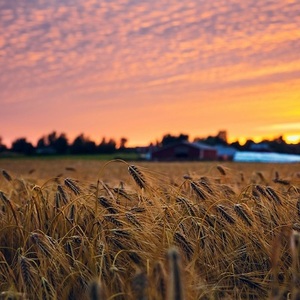

It's one of the few industries capable of actually pulling carbon dioxide out of the atmosphere and storing it. Now, farmers are starting to be payed for this feat of carbon storage. In an exchange where companies can buy carbon credits, which basically pay farmers to plant cover crops that occupy fields during the offseason, these companies are paying to offset their carbon footprint with a farmer's crop which is measured to take in a specified amount of carbon dioxide from the atmosphere.
Examples of some of the cover crops being planted include rye, rapeseed, as well as several other grass and cereal crops. Previously, farmers had already been planting such crops in the offseason, after the fall harvest and before the main spring planting, in an effort to improve soil quality and prevent erosion. Now farmers are being rewarded in a more direct, monetary way, as well.
Currently, farmers can earn, on average, around $15 for each metric ton (1.1 ton) of carbon stored. As an example, one central Ohio farmer was able to earn $175,000 over a five year period for planting cover crops across 3,000 acres.
There is still a potential for growth in the carbon market, too. According to the 2022 U.S. Census of Agriculture, nearly 18 million acres of cover crops were planted that year, which represents just 4.7% of all U.S. cropland in 2022. Also, the National Academy of Sciences estimates that cropland soils have the potential to take in 250 million metric tons of carbon. This is enough to offset 5% of all U.S. carbon emissions, or equivalent to the annual output of 64 coal-fired power plants.
Some scientists caution, though, that the carbon exchange isn't a panacea. Steven Hall, an ecologist at Iowa State University points out that at certain soil depths, some microbes convert the carbon captured by the crops into gas which can return back to the atmosphere. Also, some opposing environmentalists decry the carbon exchange as simply a way for corporate polluters to outsource their carbon reduction instead of directly changing their ways. Accurate measurement of soil, crops, and yields, as well as strict adherence to management practices will all be important parts of this burgeoning carbon exchange market.

